Episode 174: STS-87 - Stranded SPARTAN (USMP-4, SPARTAN mishap)
Table of Contents
On STS-87 we’ve got a bunch of material science in the payload bay, a free-flying satellite, a camera that fell out of Star Wars, and 645,500 friends! We also get to the bottom of a significant mishap.
Episode Audio #
Photos #
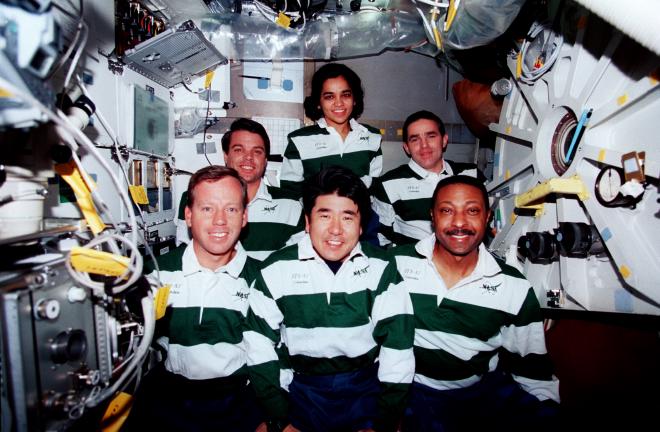
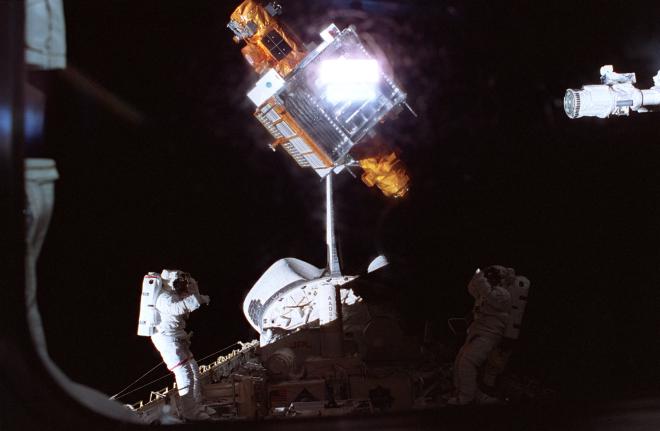
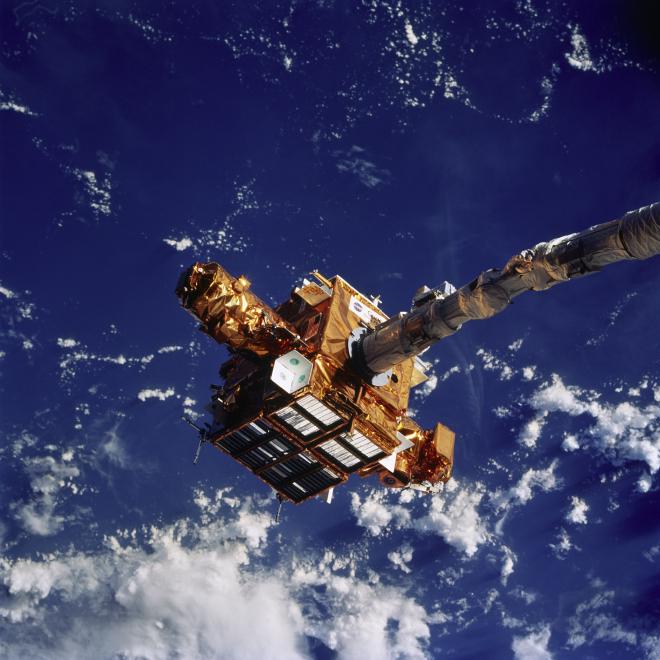
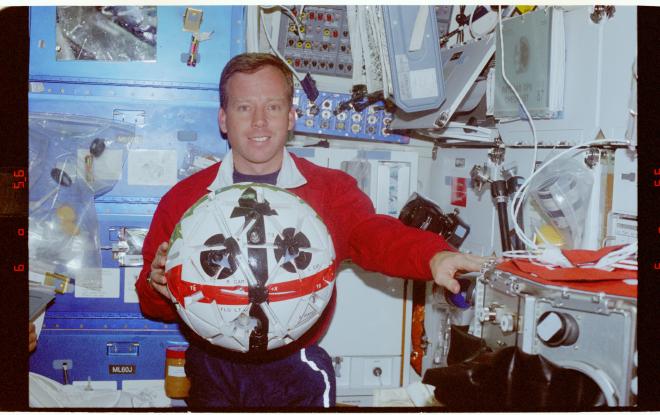
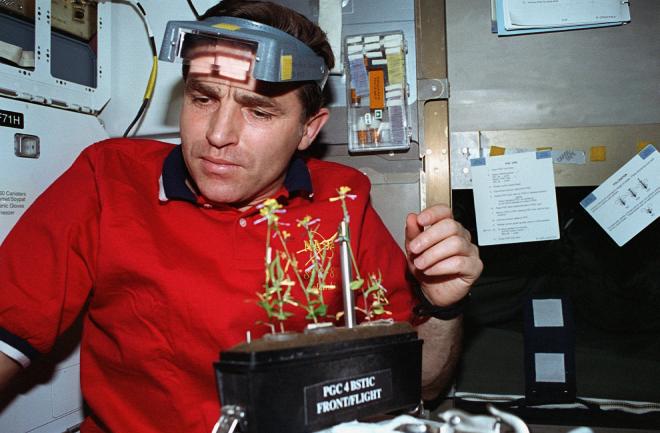
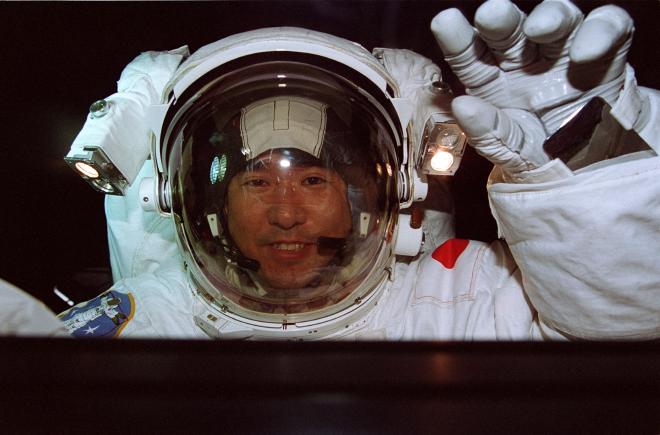
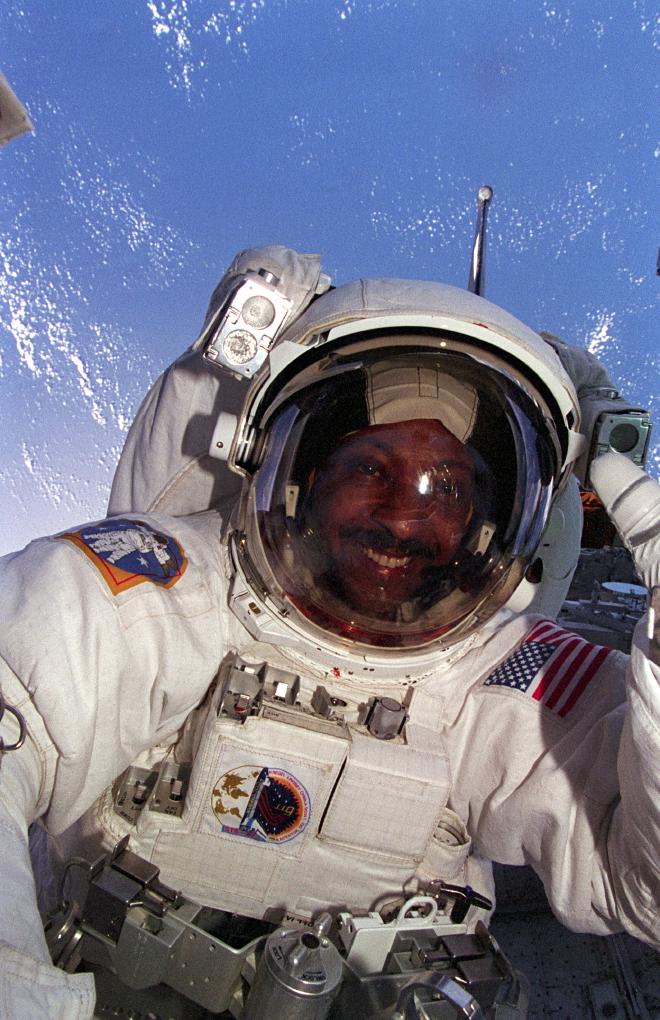
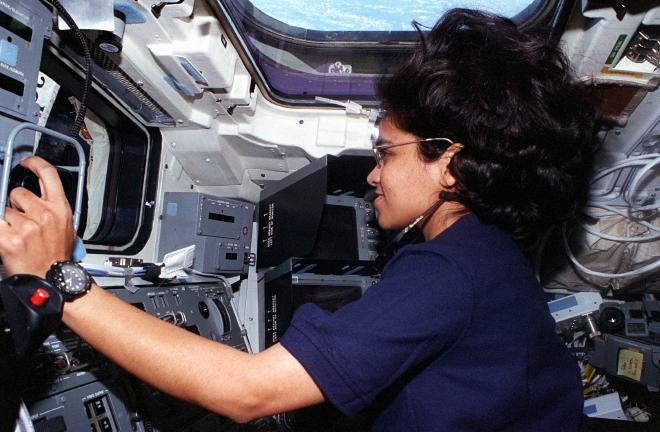
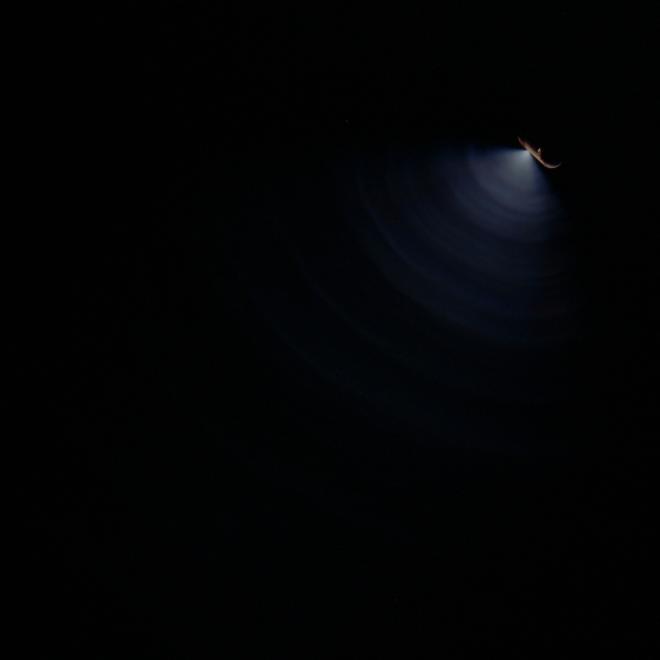
Post-Flight Presentation #
If you’d like to see the mission in motion you can check out the post-flight presentation here:
AERCam video #
If you want to see AERCam in action, check out this video!
Transcript #
NOTE: This transcript was made by me just copying and pasting the script that I read to make the podcast. I often tweak the phrasing on the fly and then forget to update the script, so this is not guaranteed to align perfectly with the episode audio, but it should be pretty close. Also, since these are really only intended to be read by myself, I might use some funky punctuation to help remind myself how I want a sentence to flow, so don’t look to these as a grammar reference. If you notice any egregious transcription errors or notes to myself that I neglected to remove, feel free to let me know and I’ll fix it.
Hello, and welcome to The Space Above Us. Episode 174, Space Shuttle flight 88, STS-87: Stranded SPARTAN and Remote Control Spaceketball
Last time, we joined Dave Wolf in the inky blackness of space as he ventured outside of Mir for his first spacewalk. Thanks to a leaky hatch, we had an excuse to go back in time a bit and learn a little about the Kvant-2 module and its handy dandy airlock, before Wolf and Solovyev were able to safely conclude their EVA. All of that is actually in the future though, so now it’s time to roll the clock back a couple months to the one shuttle mission that took place during NASA-6: STS-87, the last shuttle flight of 1997.
On the face of it, this has the potential to be a sort of boring mission. It falls into the template of “let’s get some more microgravity processing done before the ISS gets here, oh also, let’s do a practice EVA and evaluate some tools” but as always, it turns out there’s no such thing as a boring spaceflight, and there are plenty of plot twists we’ll have to get into. In fact, we’ve got enough to cover that we’re just gonna jump right in and meet the crew.
Commanding the flight was Kevin Kregel, who was flying on the left side of the flight deck for the first time. When we last saw him he was the pilot on STS-78, the LMS Life and Microgravity research flight, on Space Shuttle Columbia, which he’ll also be flying today. While that flight packed a ton of science into 17 frantic days, I suspect it will likely be best remembered as “that flight where some woodpeckers damaged the foam on the external tank.” This is his third of four flights.
Joining Kregel up front is someone who will be with us for almost the entire remaining run of the podcast: Steve Lindsey. Steven Lindsey was born on August 24th, 1960 in Arcadia, California but would tell you that he’s from Temple City, just down the road. He graduated from the US Air Force Academy with a Bachelor’s in Engineering Sciences and eight years later earned a Master’s in Aeronautical Engineering from the Air Force Institute of Technology. In between those degrees he learned how to fly the RF-4C Phantom II and began working in the 12th Tactical Reconnaissance Squadron at Bergstrom Air Force Base in Texas. He spent the next few years serving as a combat-ready pilot, an instructor pilot, an academic instructor, and test pilot before heading back to school. He was working to certify weapons for the F-16, F-111, A-10, and F-117 (aka Stealth Fighter) in 1995 when NASA came calling. This is his first of five flights, including commanding Space Shuttle Discovery’s final mission.
Behind Lindsey was Mission Specialist 1, Kalpana Chawla. I’m sure more than a few ears perked up at that name, unfortunately not necessarily for anything Chawla has accomplished, but because she was the first member of the doomed STS-107 mission to fly in space. But that’s still 25 flights away so let’s not get ahead of ourselves. Kalpana Chawla was born on March 17th, 1962 in Karnal, India. Though one source, our old pal Ben Evans, states that this only came to light later and that for years her birthday was believed to be July 1st, 1961. The discrepancy was that someone fibbed on some childhood paperwork in order to get the smart young kid into school earlier. She earned a Bachelor’s in Aeronautical Engineering from Punjab Engineering College in India, a Master’s in Aerospace Engineering from the University of Texas, and a Doctorate in Aerospace Engineering from the University of Colorado. She began working at NASA in the same year she earned her PhD, working at NASA Ames on computational fluid dynamics. In particular, she studied airflow around the Harrier vertical-takeoff-and-landing fighter jet when it was low enough that ground-effect was a major factor in its dynamics. She was a Vice President and Research Scientist at Overset Methods in Los Altos, California, working on simulation and aerodynamic optimization, before being selected as an astronaut in 1994. This is her first of two flights, with the second being STS-107.
Sitting next to Chawla, behind Commander Kregel, was Mission Specialist 2, Winston Scott. We last saw Scott flying on STS-72, which I usually remember as retrieving the Japanese Space Flyer Unit for return to Earth, but Scott probably remembers for his first EVA. On this mission the plan was to double that spacewalk count on this, his second and final flight.
Moving down to the middeck we find Mission Specialist 3, Takao Doi. Takao Doi was born in 1954 in Tokyo, Japan. He earned a Bachelor’s, Master’s and Doctorate in a mix of Aeronautics and Aerospace Engineering, all from the University of Tokyo. A few years down the road from this flight he’ll also add a PhD in Astronomy from Rice University to his CV. In 1985 he was selected as one of three potential Payload Specialists for STS-47, the Spacelab-J mission, along with Mamoru Mohri and Chiaki Mukai. He ended up serving only as a backup Payload Specialist for that flight, but ten years later began training as a full on Mission Specialist. On this flight he’ll be joining Winston Scott for a jaunt around the payload bay, making him the first Japanese person to perform an EVA. This is his first of two flights.
And rounding out our crop of rookies is Payload Specialist 1, Leonid Kadeniuk. Leonid Kadeniuk was born on January 28th, 1951 in the Chernivtsi region of Ukraine. He graduated from the Chernihiv Higher Aviation School in Chernihiv, Ukraine, and then from a Soviet test pilot school with a long and confusing name. Much later, he also earned a Master’s in Mechanical Engineering from the Moscow Aviation Institute. In the middle of all that, he was selected to train as a Cosmonaut.. in 1976. You know, the year after the Apollo-Soyuz Test Project. So yeah, Kadeniuk has been at this for a very long time. Unfortunately, a flight never quite came together for him. He was training to fly on the Buran, the Russian equivalent of the Space Shuttle, but of course that only flew the one time, and nobody was even on it. His long road to space ended up leading him to 1996, when he was chosen as a Payload Specialist by NASA and the Space Agency of Ukraine. I see several sources credit Kadeniuk as being the first Ukrainian in space but that sort of puzzles me, and actually him too. It’s true that Ukraine was now its own nation, but there have been cosmonauts who were from the USSR-era Ukraine region and who have flown after Ukrainian independence. So I don’t know. In any case, he’s certainly a Ukrainian to fly in space, on this, his first and only flight.
On November 19th, 1997, the launch countdown proceeded smoothly with no unexpected holds. There was one minor hiccup when a seal came off of its port during the cabin leak check, necessitating a quick repair and slightly delaying the leak check, but it wasn’t significant enough to hold up the launch. So at 2:46 PM Eastern Standard Time, Space Shuttle Columbia lifted off for the 24th time.
This ascent marked the first use of a new technique: the roll to heads up. Typically when the shuttle launched, it oriented the entire stack to point along the desired azimuth, rolling to place the orbiter itself underneath the external tank. That is, while I don’t think it felt that way to the crew, they were sort of flying upside down, with their heads pointed at the ground. This “heads-down” orientation allowed the orbiter to communicate with ground-based antennas. I believe it also assisted with loads on the wings and overall stability.
But starting with this flight, around six minutes after lifting off the entire orbiter/external-tank stack would roll 180 degrees in around 36 seconds, placing the orbiter on top in a heads-up orientation. The reason for this dramatic maneuver was that in the new orientation the orbiter could gain line of sight to TDRSS satellites, establishing a connection two minutes earlier than normal. On previous flights this part of the ascent was tracked by a ground station in Bermuda, but thanks to the early access to TDRSS this was no longer necessary and a little money could be saved. My favorite part about this roll was that the computer looked at realtime conditions and decided whether to roll to the left or the right in the moment, with no one sure which way it would go until it did it. What a fun surprise.
After Main Engine Cutoff, the ET was jettisoned and the crew scrambled out of their seats to get some photos of the tank. They were treated to an exceedingly rare sight: the tank venting excess gaseous hydrogen into the vacuum of space. The photos are pretty incredible, and I’ll be sure to include them on the podcast’s revamped website, but they were also helpful for another topic we’ll discuss later in the episode.
The mission had two primary objectives: US Microgravity Payload 4, which we’ll get to a little later, and the deployment and retrieval of our old buddy SPARTAN. SPARTAN, of course, is the Shuttle Pointed Autonomous Research Tool for Astronomy, a free-flying payload that depends on the Shuttle to do all that tricky “getting to space and back” business, leaving it able to focus on its mission. Its mission today is to study the sun, specifically its upper atmosphere, the corona. This was useful all on its own but was especially useful in this case because SPARTAN would be observing the sun at the same time as the new Solar and Heliospheric Observatory, or SOHO. SOHO was parked at the Sun-Earth L1 point, revolving around the imaginary line between the Sun and the Earth and keeping an eye on our nearest star at all times. Well, except.. almost all times. On the day that Columbia launched, SOHO experienced a little hiccup and placed itself into safe mode. In order to give SOHO and its team a little more time to recover, the deployment of SPARTAN was delayed from Flight Day 2 to Flight Day 3.
When Flight Day 3 rolled around, Mission Specialist 1 Kalpana Chawla took the controls of the robot arm and grappled SPARTAN, raising it up out of the payload bay. After working her way through the checklist and receiving a GO to deploy from the ground, she released the tiny spacecraft and backed the RMS away by a couple of feet. The crew then watched and waited for the little wiggle SPARTAN would do to indicate that the attitude control system was working and all was well, a maneuver called the pirouette. A couple minutes went by and.. no pirouette. SPARTAN just sat there. Uh oh. Something was wrong.
With concurrence from the ground, Chawla moved the RMS back in to re-capture the stricken satellite. The re-capture failed, and worse, the attempt left SPARTAN in a 2-degree-per-second spin, too fast to try again with the RMS. In a matter of minutes, this had gone from a routine deployment to a serious problem. Moving quickly, Commander Kregel consulted with the ground and was approved to attempt to match SPARTAN’s spinning with the entire orbiter. This would make it so that from the crew’s perspective SPARTAN wasn’t spinning anymore, allowing another RMS re-capture attempt. But Columbia would have to use a lot of propellant to do this. This is sort of a weird analogy but stick with me cause sometimes weird analogies can help convey a visual image in an audio-only medium. Imagine a TV sitting on the edge of a merry-go-round, facing outward. You’re standing 20 feet away and would like to watch the TV but the merry-go-around is slowly spinning in place. If you want to keep the TV front and center in your field of view you’ll match the merry-go-round’s spin rate, making it look like it’s no longer spinning from your perspective. But to do that you’ll have to quickly shuffle around the entire circumference of a circle with a 20 foot radius and the merry-go-round at the center. Maybe that’s not too hard as a human on the ground, but as a giant spacecraft with a limited propellant budget it wasn’t going to work. After attempting the chase for a little over an hour, the ground called it off in order to maintain propellant margins. With no other choice, Kregel executed a separation burn to back away from SPARTAN. Just to pile on the problems, at some point during the chase and separation, SPARTAN had been knocked around by the orbiter’s thrusters, further increasing its spin rate. SPARTAN was now tumbling, and alone.
OK. So. While everyone regroups and figures out what to do, let’s answer the question I’m sure most of you are wondering: what just happened? Wait until the end before you decide that I’m judging anyone too harshly, but the very short version is this: Mission Specialist Chawla accidentally skipped a step on the deployment procedure, leading to SPARTAN’s attitude control system not activating. She subsequently attempted a re-capture but commanded a capture too early, when the robot arm’s end effector wasn’t yet in the correct position. Realizing her error, she commanded a release but mistakenly kept the end effector moving closer to the target, resulting in one of the snare wires impacting the capture pin on SPARTAN and imparting a spin to the spacecraft.
These are facts, but they’re also a great example of how easy it is to tell a misleading story by not including all the facts and context. Thankfully for us, our old buddy Rick Hieb, no longer an astronaut but still working in the space industry, was put in charge of investigating the mishap and his report makes it more clear what actually happened here.
There is no doubt that at the end of the day, yes, Chawla made some mistakes that fall squarely on her shoulders. But as is often the case with something like this, it turns out that a series of small contributing factors that would have been fine on their own combined together to create the opportunity for these mistakes to happen.
First, due to the delay in deployment caused by SOHO’s own anomaly, the deployment was moved from Flight Day 2 to Flight Day 3, which due to lighting conditions and shifting sleep schedules meant that there was one hour less between wakeup and deploy time. But it also required updating both the Day 2 and Day 3 flight plans. The SPARTAN deploy procedure was removed from the Flight Day 2 plan that the crew had on board and was moved to the Flight Day 3 plan, which the crew didn’t have yet. Due to some delays in available Ku-band communication, that plan wasn’t available to the crew until an hour and a half before the scheduled deployment. It was late enough that the ground actually had Chawla begin issuing early commands without the checklist, just verbally conveying them over the radio, which is not at all typical.
Second, there’s the SPARTAN interface. This was notoriously confusing and difficult to work with. Sometimes commands sent to the berthed spacecraft resulted in a confirmation display. Sometimes it shows a confirmation but only for a second before going back to a default state. And the whole time there is no way to access the list of commands that have already been sent, despite the fact that this is being logged to a text file on the control laptop. There’s no way to see what has and hasn’t been commanded and what has and hasn’t been received and acknowledged by the spacecraft.
Third, Chawla missed a step on the checklist. Mistakes happen. In a bit of rotten luck, this happened during a brief period of loss of signal. Before this, Chawla had been verbally confirming each step with the ground as she proceeded, but just by chance this critical step to prepare SPARTAN for deployment took place when there was no signal to the ground. So nobody noticed when she didn’t call it out. But not only was no one tracking on the ground, no one was tracking on the orbiter. SPARTAN operations did not fall under what’s called Cockpit Resource Management like other critical parts of the flight. Ideally Chawla would have had a partner for this deployment, independently confirming each step alongside her. It reminds me of how after making a disastrous error in a simulated flight, Hoot Gibson never did anything without saying it out loud and getting a confirmation from someone else.
Fourth, mission control couldn’t actually see the state of the SPARTAN spacecraft in telemetry. This might be fine, except that both Chawla and Commander Kregel believed that they did have insight into SPARTAN’s current state. Again, this misunderstanding might not have been a problem in a nominal deploy sequence, but it changed the meaning of the phrase “go for deploy” for both parties. When the ground said “go for deploy” it meant it as “yeah, we’re good on comm and the orbiter is all set, and per the checklist SPARTAN should be ready, go for it.” But Chawla and Kregel heard “after checking telemetered data on our displays on the ground we confirm that SPARTAN is ready for deployment, go for it.”
And lastly, there is no onboard system that confirms that the spacecraft is ready to go. No light that turns from red to green or an indicator on a laptop or any of that. The crew member has to just carefully apply the commands in the blind and trust that it worked. It’d be like trying to power up your computer and send an email with the monitor turned off, just executing a series of keyboard shortcuts and hoping they were doing the right thing and that you didn’t miss any. In my mind this was the thing that was easiest to implement and would’ve been the biggest help. A simple read-back of issued commands and an indicator of what mode the spacecraft was in could have prevented this entire situation.
So the result of all this was that the step was missed and SPARTAN was deployed in the incorrect mode. Basically, SPARTAN still thought it was going through pre-deploy safety checks. But what about the re-grapple? Again, at the end of the day, the facts are that Chawla made a mistake and failed to capture the spacecraft. But why?
First, when trying out the RMS earlier in the flight to get a feel for it, Chawla was surprised to discover how different it felt than in simulations on the ground. To her, the real RMS felt jerky and more dynamic than expected. Training can never fully replicate the real thing, but with each step away from realism comes new opportunities for problems on orbit. Plenty of other crew members have successfully coped with those differences but they’ve definitely been noted before. One time that comes to mind was Steve Hawley’s experience with small uncommanded motions complicating the Hubble deploy. It’s one more factor that makes a mistake more likely.
Second, a lot was happening at once. Commander Kregel had already used the thrusters a bit to better align the orbiter with SPARTAN. Commander Kregel and Pilot Lindsey were watching the RMS displays, with Kregel reading out proximity calls to Chawla, allowing her to focus on the view out the window and the view from the robot arm’s camera. Doi was operating the camera on the RMS, attempting to adapt to changing lighting conditions in order to present Chawla with the best possible view. But despite his efforts, the camera struggled with the harsh lighting conditions and would bloom and wash out details.
Third, there was a time limit. While Chawla later recalled no feeling of being rushed, everyone was aware of a quirk of the SPARTAN spacecraft. If it was left on its own in the wrong mode for an hour, it would fire a pyrotechnic valve and safe the system, preventing a re-deployment later in the mission. Combined with the knowledge that SPARTAN had a reputation for being difficult to berth and there was definitely pressure to get this capture done sooner rather than later. This also resulted in her driving the RMS at its maximum speed, which combined with the more dynamic-than-expected feel of the arm added to the difficulty.
Fourth, Chawla issued the capture command too early. Again, mistakes happen and this is tougher than it looks. To refresh your memory, capture with the RMS is accomplished by placing the RMS end effector over the grapple fixture of the target spacecraft. In more down to Earth terms, move the paint bucket at the end of the arm such that it surrounds a big nail sticking out of the spacecraft. When the capture command is issued, three snare wires around the inside perimeter of the paint bucket move in and make contact with the big nail, wrapping around it, with the head of the nail preventing the snare wires from slipping off. With the wires firmly holding onto the big-nail-slash-grapple-fixture the robot arm can now move the target spacecraft around. Just, y’know, be sure not to call it a paint bucket and big nail if you tell this story later and don’t want to sound like a doofus.
Lastly, when Chawla issued the command early she realized it right away and issued a release command. Unfortunately, she also kept moving the end effector closer to the grapple fixture, mislead by the view she had available into thinking that she was clear of the fixture. The result was that the snare wires made contact with the fixture and started SPARTAN’s spin.
For this, I think we can partially chalk it up to the fact that there isn’t much training done on off-nominal re-captures like this, and the training that does happen doesn’t require struggling with the realistic lighting conditions. Chawla still had to own making the mistake, which she readily did, but the combination of time pressure, poor lighting, unexpected arm dynamics, and lack of specific training all made a hard job that much harder.
When I read this story I had a few thoughts. First, this really stinks for Kalpana Chawla. Nobody likes making a mistake, and I can’t imagine how difficult it was to make such a potentially costly mistake in such an absurdly public way, even if her crewmates and commander were quick to defend her against pointed questions from the press. But I also look at this incident as an opportunity. An implicit part of every experiment and mission completed on the shuttle isn’t just doing the work at hand, but learning how to do it better and what unexpected issues will get you. Yes, Chawla’s mistake lead to the SPARTAN mission being a failure, even if we’ll get the spacecraft back later, spoilers. But while I have zero data to back this up, I guarantee it also tightened up training for future deployments and payload captures. I guarantee future crews realized this was trickier than it seemed and worked harder at learning it on the ground. I guarantee that it improved cockpit resource management in areas of spaceflight that previously may not have received such scrutiny. And I guarantee that it prevented some other mishap down the line that we’ll never even know about because it never happened. All anyone can ask of the crew is that they do the job to the best of their abilities and training, and learn from their mistakes. And that’s exactly what was done here.
OK, that was a lot to digest, and everyone needs some time to figure out how to save SPARTAN, so what else is happening on this flight? Among several hitchhiker payloads in the back of the payload bay was one I just want to briefly mention because I thought it was kind of hilarious: the Compact Disc Evaluation Experiment. From what I can tell, this is just a bunch of regular CDs that are being exposed to space to see what happens. To what end? Who knows. Maybe they had the Spektr depressurization in mind. But science demanded an answer. Unfortunately for us, despite me poking around I couldn’t find any publication with a result. So I guess we’ll have to just risk it when we bring CDs to space.. on the outside of the spacecraft.
More importantly was the second primary payload of this flight, the US Microgravity Payload-4. You may remember the US Microgravity Payload from STS-52, STS-62, and STS-75, and here it is again, flying for the fourth and final time. For the most part this is sort of a boring payload from our point of view. I’m sure the scientists who were running the experiments were excited but it was mostly operated from the ground. The crew just turned the payload on at the start of the flight and off at the end.
Among the experiments making up USMP-4 was the Advanced Automated Directional Solidification Furnace, which has flown before on USMP-2 and -3. Joining it was MEPHISTO, which has ridden along for all four USMP flights. Something new is the Confined Helium Experiment, or CHeX. The goal here was to better characterize how the size of computer chips affected their thermal properties, while also learning about helium’s remarkable cooling abilities, especially when confined to essentially only two dimensions. Components on computer chips had been getting smaller and smaller and still had a ways to go, but as you start to pack more and more components into a smaller and smaller place, heat becomes a big obstacle. So to help with that, CHeX would use 392 super thin disks of silicon crystals with also-super-thin layers of liquid helium filling the gaps between them. It was basically the world’s beat CPU heat sink. Take that, overclockers. By combining this setup with some intensely precise thermal sensors and feedback electronics, the temperature could be regulated to within a billionth of a degree.
Also making the ride are two instruments that have been on basically every flight since I first brought them up but since this got sort of repetitive I stopped talking about them. So I figure I should remind you that they exist: SAMS and OARE. SAMS is the Space Acceleration Measurement System and OARE is the Orbital Acceleration Research Experiment. Both instruments make extremely precise measurements of the acceleration environment onboard Columbia, allowing the material science investigators to interpret their results more accurately. When they can factor in thruster firings, machinery whirring, drag from the thin wisps of air at this altitude, and that pesky crew banging around, they can better understand what they’re seeing. Anyway, back to not mentioning those two for another 30 missions I guess.
One part of USMP-4 that did have some crew involvement was a glovebox on the middeck, where crew members performed two material science experiments, and one that studied the effect of different air flow velocities on the stability of smooth flames. Neat.
Alright, has that been enough time to figure out what to do about SPARTAN? Seems like it. The plan was to go outside and literally just catch the darn thing by hand. Conveniently enough, there was already a spacewalk on the schedule! Three days after leaving SPARTAN behind, Columbia completed a rendezvous with the stranded satellite, moving up its R-bar. Situated in the payload bay were Winston Scott and Takao Doi, ready and waiting to capture SPARTAN. One source I read mentioned that this was quote “the first time in the 16-year history of the shuttle program that a manual retrieval was planned ‘on-the-fly’” to which I say that STS-49 and Intelsat would beg to differ! But something that was a first for the shuttle program was Space Shuttle Columbia finally getting its first EVA. On its 24th flight, Scott and Doi became the first people to exit Columbia’s airlock in space. Of course, that honor was supposed to go to Tammy Jernigan and Tom Jones on STS-80, but, well, we know that story.
As Commander Kregel gently eased Columbia up to SPARTAN, the spacewalkers patiently waited for it to rotate into a convenient orientation. It turns out that it was actually fortuitous that SPARTAN had been put into a faster spin by plume impingement when Columbia was departing earlier in the mission. The faster rate was detected by onboard systems, which determined that something wasn’t quite right here, and activated a backup system to reduce the spin rate considerably, making the retrieval job that much easier. Just over 72 hours after leaving it behind, Scott and Doi grabbed onto SPARTAN with no problems. It turns out that the crew were right to be concerned about a difficult berthing because the spacewalkers struggled to do it manually. Eventually the RMS was used to again grapple the spacecraft and return it to its berth. There had been hopes of maybe re-deploying SPARTAN later in the mission, though I’m not sure how, given that pyrotechnic valve thing from earlier, but concerns about propellant margins set those aside. Its solar observation mission was a failure today, but with the spacecraft safely back in the payload bay there would be other chances in the future. After landing, Commander Kregel said quote “A big success of that incident was in a short time frame, all the folks getting together, coming up with a plan to retrieve a very valuable asset. And if that doesn’t show the ability of humans to adapt to changing situations in space, then I don’t know what is. So in a lot of ways it was a big success.”
OK, that’s pretty great, but Scott and Doi are still outside, what are they up to out there? The answer was a truncated version of the spacewalk they had planned to perform, trying out some different tools and equipment that was hopefully going to be useful during ISS construction. Believe it or not, this is no longer some abstract concept far out in the future. This was the last planned US spacewalk until the first ISS construction EVA. Wow.
Between catching SPARTAN and performing as much as possible of the original spacewalk, Scott and Doi ended their EVA 7 hours and 43 minutes after it began. Quite a day in the office.
Turning our attention back inside, it’s time for a little plant science. During his stay on orbit, Payload Specialist Leonid Kadeniuk would be performing the Collaborative Ukrainian Experiment, or CUE. This consisted of ten different experiments investigating various ways that plants are affected by growing and living in the space environment. What makes CUE especially interesting is that Kadeniuk was joined by an army of collaborators putting the Collaborative in Collaborative Ukrainian Experiment: at least 20,500 students and teachers in Ukraine and as many as 625,000 in the United States would be replicating the same experiments down on the ground. Later they would be able to compare their results against the observations made by Kadeniuk on Columbia and see how they differed. I gotta say, this sounds pretty awesome for the kids, and with all the different student collaboration experiments we’ve talked about over the years I feel kind of left out that I never got to try one. No word on if there is a plant biology paper floating around out there with 645,501 authors listed on it.
As the lengthy flight continued, the ground decided that it would be worthwhile to add a second spacewalk to the mission. This poor EVA has been foiled twice now, first being canceled completely by a stuck hatch on STS-80 and now getting cut in half by the unexpected SPARTAN retrieval. And as I mentioned, this was the last spacewalk before the ISS enters the picture, so it would be valuable to finally complete the objectives that Jernigan, Jones, Scott and Doi had trained for. So ten days later, near the end of the flight, Scott and Doi again clamored out of Columbia’s payload bay, intent on completing this spacewalk once and for all.
One of the main tasks was simulating the replacement of one of the large batteries on the ISS. These batteries were stored in a standardized Orbital Replacement Unit and were roughly the size of a washing machine, or small refrigerator, and weighed about 160 kilograms. So even in weightlessness, swapping them out would be no trivial task. Scott and Doi evaluated the use of a small crane to perform the task. The crane could be extended from around 1 meter to around 5 meters in length and would hopefully make it easy to move the battery from point A to point B. After trying it, the spacewalkers found that the crane was a little more flexible than expected, which meant that the battery procedure was less stable than was ideal, but it did work.
They also tried using it to move a smaller Orbital Replacement Unit, sort of. They actually moved the cable caddie from STS-72, which had apparently been downgraded from “useful tool” to “heavy object”.
Other tasks included evaluating a variety of different tethers and work aids. A new Portable Foot Restraint held an astronaut’s feet in place and allow them to hold onto things and get some leverage. The Body Restraint Tether clamped onto a handrail and again, freed the crew member’s hands for other tasks. The Multi-Use Tether sounds like the Body Restraint Tether, but even better, able to hook onto handrails, ORUs, tools, and so on.
The tool evaluations went fine, but the real reason I’m excited to talk about this spacewalk is AERCam. The Autonomous EVA Robotic Camera, or AERCam, also called Sprint just to be confusing, can be described in a couple ways. Remember that thing from Star Wars that kept zapping Luke Skywalker while he was training to use the force while swinging a light saber around? It’s basically that, but bigger. I’ve also called it a “spaceketball”. What it really was was a 16 kilogram sphere a third of a meter across, which is somewhere in size between a basketball and one of those mylar balloons people get for birthdays. Covering the ball’s surface were various stripes and dots that helped make its orientation clear, along with a number of blinking LED lights to make it visible in the dark.. oh and two video cameras and 12 thrusters. Yes, this little ball could fly around and shoot live video.
Since this could obviously pose a safety hazard, AERCam’s maximum speed relative to the orbiter was a pathetic 7-and-a-half centimeters per second, or about 0.17 miles per hour. And in addition to that it was covered in soft Nomex so it could bump right into stuff without hurting anything.
The thrusters and sensors were actually derived from SAFER, the emergency jetpack that sat at the bottom of the EMU backpack in case an astronaut became untethered and needed to fly back to safety. It’s the same basic idea, but the thrusters were ten times weaker in order to better suit the lower mass. What makes AERCam extra cool is that it was piloted in realtime from inside the cockpit by mission Pilot Steve Lindsey. Once Winston Scott gently let go of the funny little ball, Lindsey began steering it around the payload bay, spinning it this way and that to take a look at things. Lindsey praised its handling characteristics, saying it flew even better than expected, giving him no difficulty.
Even more fun, I found the video! You’ll find it posted to the The Space Above Us YouTube channel and on the show notes page for this episode. Thanks to Chris Bergin for giving me the go-ahead to post it publicly after I found it in the normally closed-off L2 forum. Help me return the favor and go take a look at nasaspaceflight.com and their excellent forums, and consider joining L2.
AERCam wasn’t all fun and games, though. It was intended to be used as an extra set of eyes on spacewalks outside the ISS, or even better, without the need for a spacewalk in the first place. There were even plans to upgrade it to hold sensors for detecting chemical leaks, which could be handy if something outside the ISS sprang a leak. And if this sounds familiar, it should. It’s almost the exact same idea as that Inspektor payload that we talked about during NASA-6. But unfortunately for AERCam, it’s also like Inspektor in that it never flew again. I understand that something as complex and resource-intensive as the ISS is going to have a lot of priorities ahead of something like AERCam, but it’s just so cool and interesting that it was seriously disappointing to both learn of its existence and its untapped potential all at once. Oh well, it was fun while it lasted.
When the AERCam evaluation was complete, Lindsey flew the tiny spacecraft back to Winston Scott, who easily grabbed and placed it back in the airlock. Soon enough, that’s where Scott and Doi were too, closing out a 4 hour and 59 minute EVA.
Back inside, it’s about time to wrap this mission up, but there’s still one more objective that you won’t find in any mission report. A couple times during the mission, while everyone else was asleep, Kalpana Chawla quietly woke up and drifted over to the middeck window, pulling back the cover to enjoy a quiet view outside. But she had also made a promise to herself that she would find the time to spend one full orbit looking out the windows. Near the end of the flight, she found her chance. She later said quote: “As I float near the windows on the flight deck, continents and oceans move by. South America is covered with thunderstorms as sprays of lightning shimmer through the clouds. As clouds give way, I can discern the coast and make out small settlements by their lights. The Earth, a curved dull-black dome below us, looks alive in its display of lights. Stars hang everywhere in the sky, some clearly farther away than others, hardly any twinkling. My crewmate Takao Doi hands me binoculars and guides me to M42, a nebula in the Orion constellation. It looks like a far-away green castle, and our spaceship, a white chariot, seems bound for it.” And just an hour and a half later, her personal trip around the world was over. Only 90 minutes and she had flown over the entire planet. It really reinforced the fact of just how small our home is.
At the end of the lengthy mission, the crew suited up, forced themselves to drink fluids so they could better handle the return to Earth, and fired the OMS engines to begin reentry. Half a world later, Columbia gently touched down at the Kennedy Space Center, closing out a mostly successful mission and adding to the records 15 days, 16 hours, 34 minutes, and 2 seconds.
Unfortunately, while the reentry was successful, it would also prove to foreshadow events to come. Remember those photos the crew took of the External Tank right after MECO? Once the film was developed they showed an unusual amount of missing foam, especially in the intertank area of the big orange tank. Sure enough, upon return, an inspection of Columbia’s thermal protection system revealed an unusually large amount of damage. In total, 308 hits were cataloged, with 132 an inch or more in dimension. One impact left a mark 15 inches long, 2 inches wide, and a quarter inch deep, and another was only 4 inches long and 2 inches wide, but an incredible one-and-a-half inches deep, 3.8 centimeters, nearly the entire depth of the tile. Columbia had sustained significant damage caused by dangerous foam shedding from the External Tank. This mission had landed safely, but it would prove to be an ominous warning. But that’s a story for another day.
Next time.. our time with Shuttle-Mir is almost over. On STS-89 it’s time to bring Dave Wolf home and deliver the final NASA astronaut to live on the Russian space station. Andy Thomas never expected to fly to Mir, but for the next four months it’s where he’ll call home.
Ad Astra, catch you on the next pass
